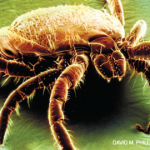Other patients develop proliferative synovitis despite oral and intravenous antibiotic therapy, called postinfectious, antibiotic-refractory Lyme arthritis. Dr. Steere concluded that, “We do not think this is due to an active infection.” This assessment is reinforced by the fact that when these patients are treated with immunosuppressive medications, such as methotrexate or tumor necrosis factor (TNF) inhibitors, their infection does not reactivate.
Autoimmune Disease
Dr. Steere explained that antibiotic-refractory Lyme arthritis is likely caused by excessive inflammation from a combination of certain spirochetal factors and specific host factors. He specifically mentioned RST1 strains of the spirochete as a particularly inflammatory subtype. The combination of infection with this subtype and certain host genetic factors cause excessive inflammation, which paves the way for pathology. Specifically, these patients exhibit marked stimulation of pro-inflammatory pathways that result in excessively high levels of interferon (IFN)-ɣ, with inadequate levels of IL-10.
This phenomenon happens more often in individuals with a certain toll-like receptor (TLR)-1 polymorphism that is common in the European Caucasian population and/or in individuals with immune dysregulation of the CD4+ effector T cell/regulatory T cell ratio. People with this predisposition can go on to develop pathogenic autoimmunity from infection with B. burgdorferi. For example, some of these patients develop T and B cell responses to endothelial cell growth factor (ECGF), and ECGF autoantibody levels correlate strongly with the magnitude of obliterative microvascular lesions in synovial tissue.
Finally, systemic autoimmune joint diseases, such as rheumatoid arthritis, may follow Lyme disease. This complication most commonly follows antibiotic-treated erythema migrans. Compared with patients with antibiotic-refractory Lyme arthritis, these patients generally have polyarthritis and low-titer B. burgdorferi antibodies, whereas Lyme arthritis is associated with monoarticular or oligoarticular joint involvement and high-titer B. burgdorferi antibodies. These factors may provide insights for correct diagnosis.
Lara C. Pullen, PhD, is a medical writer based in the Chicago area.


